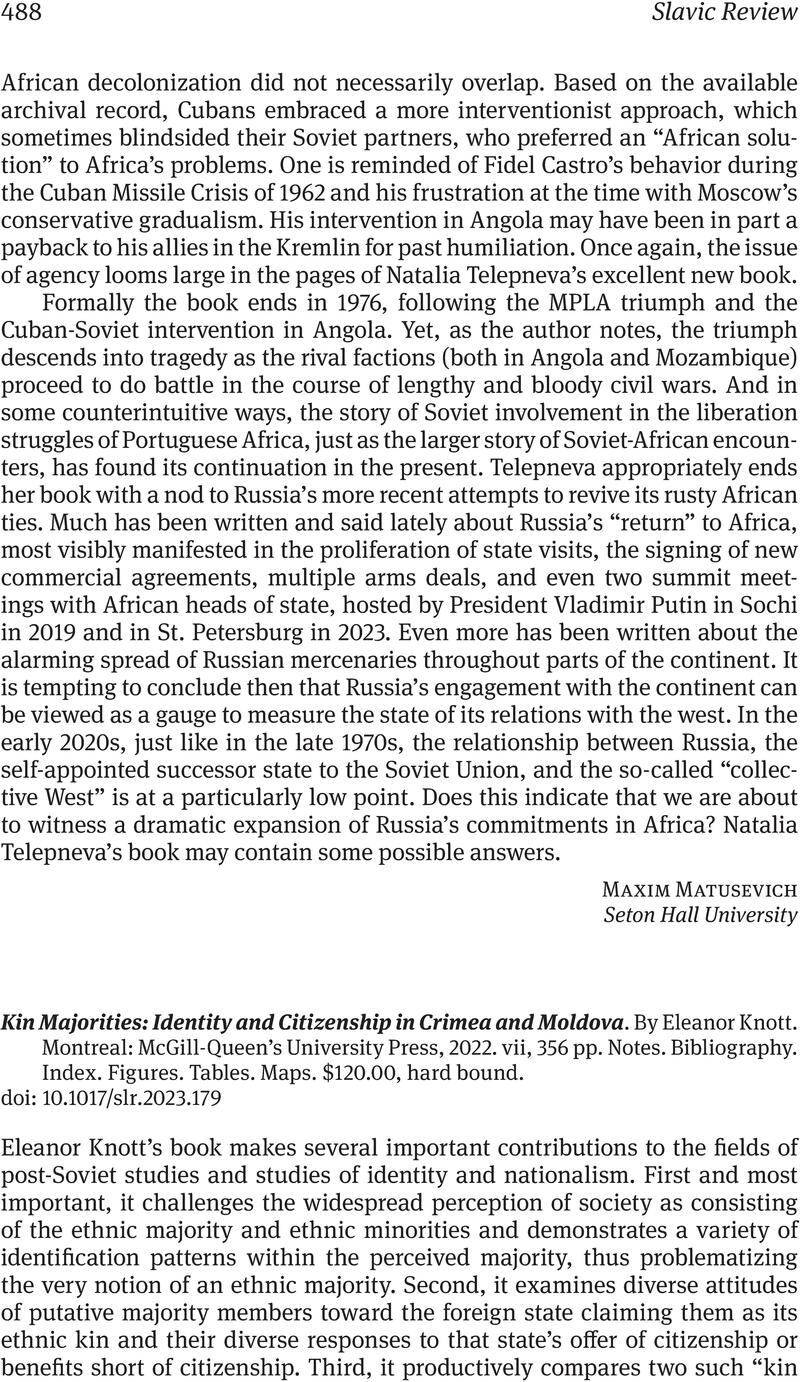No CrossRef data available.
Article contents
Kin Majorities: Identity and Citizenship in Crimea and Moldova. By Eleanor Knott. Montreal: McGill-Queen's University Press, 2022. vii, 356 pp. Notes. Bibliography. Index. Figures. Tables. Maps. $120.00, hard bound.
Review products
Kin Majorities: Identity and Citizenship in Crimea and Moldova. By Eleanor Knott. Montreal: McGill-Queen's University Press, 2022. vii, 356 pp. Notes. Bibliography. Index. Figures. Tables. Maps. $120.00, hard bound.
Published online by Cambridge University Press: 01 November 2023
Abstract
An abstract is not available for this content so a preview has been provided. Please use the Get access link above for information on how to access this content.

Information
- Type
- Featured Reviews
- Information
- Copyright
- Copyright © The Author(s), 2023. Published by Cambridge University Press on behalf of the Association for Slavic, East European, and Eurasian Studies

